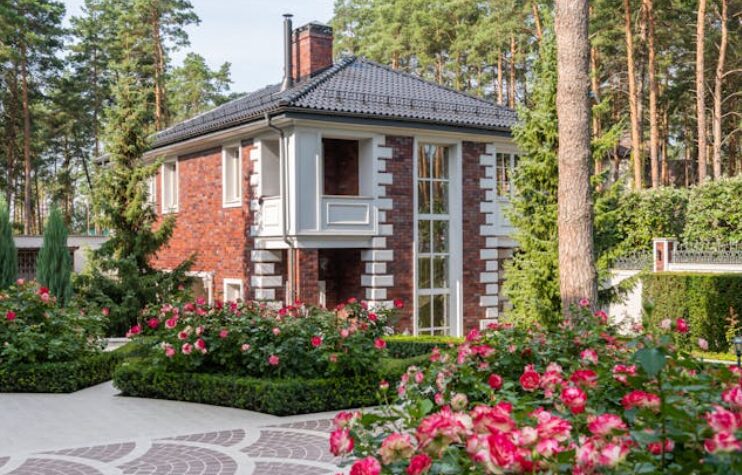Urban Landscapes: How Flower Window Boxes Are Changing City Balconies

Have you ever noticed how our concrete jungle lacks a touch of green? Many city dwellers are turning their balconies into bursts of floral beauty with something as simple yet transformative as flower window boxes. These aren’t just your regular plant pots; they’re a canvas of color, brightening up the dull grays of urban landscapes. By introducing flower window boxes, residents are not just decorating; they’re adding life and freshness to their living spaces and the city. This little touch of greenery is more than decoration; it’s a vital part of transforming our living areas into more lively, pleasant spaces.
Historical Context
So, where did the idea of using window boxes begin? Believe it or not, it’s not a new trend. The concept has roots that go deep into history across various cultures. Originally, these boxes served more than an aesthetic purpose—they were practical, space-saving solutions for growing herbs and vegetables in the limited confines of urban living. Over time, the function turned ornamental as flowers replaced edible plants. From the crowded streets of ancient Rome to the picturesque windows in Paris, each culture has added flair to balcony gardening, evolving this charming practice into what it is today.
Aesthetic Transformation
Ever walked down a street lined with vibrant flower boxes? It’s like someone turned on the color saturation in a drab city scene, right? Flower window boxes are more than just plant holders; they’re like live paintings on the canvas of city buildings. These small bursts of greenery and blooms can drastically alter the look and feel of an entire neighborhood. When it comes to filling these boxes, choices like geraniums, petunias, and lavender are popular for their robust colors and delightful scents and their ability to thrive in confined spaces. Consider cities like Amsterdam or New Orleans, where balcony gardens contribute significantly to their charm. These places show us how integrating nature into architecture can create enchanting urban environments that captivate locals and tourists alike.
Environmental Benefits
But it’s not just about beauty! Did you know that these quaint window boxes also pack a punch in terms of environmental benefits? Firstly, they contribute to urban biodiversity, providing much-needed habitats and food sources for urban wildlife like bees and butterflies. They’re also stars in the urban eco-system for purifying the air—plants in window boxes help filter out pollutants, making the air cleaner for all of us. Plus, they play a role in reducing urban heat islands; more greenery means cooler surroundings. Sustainable practices like using native plants, composting, and efficient watering systems further enhance the eco-friendliness of urban gardening. Cities worldwide are beginning to embrace these practices more widely, turning urban spaces into greener, more sustainable environments.
Practical Considerations
When decking out your balcony with window boxes, the key is knowing your space. Does your balcony bask in sunshine, or is it more of a shady retreat? Picking the right plants is crucial; sun-lovers like marigolds or zinnias won’t do well in shade, where ferns or hostas might thrive. And remember, a flourishing window box garden isn’t just about planting. Regular feeding, watering, and deadheading old blooms are must-dos to keep your floral display looking fabulous. Do you have a tiny or awkwardly shaped balcony? No worries! Plenty of innovative planters can adapt to railings or hang over edges, making the most of every inch.
Social and Psychological Impact
But hey, it’s not just about making your balcony pretty. These little gardens can foster a sense of community, too. Imagine entire blocks with balconies bursting with greenery—such shared spaces encourage interactions among neighbors, turning anonymous urban areas into tight-knit communities. On a personal level, tending to a garden, even a small one in a window box, can be incredibly soothing. It’s a slice of nature outside your window, reducing stress and boosting mood. Community projects like neighborhood gardening days can transform isolated spots into communal hubs, knitting people together as they dig in the dirt. Cities like Berlin and San Francisco have seen great success with community-led green initiatives, proving that small spaces can have a big impact.
DIY and Creative Ideas
Ready to jump into the world of DIY flower window boxes? Here’s how to start: First, measure your window or balcony rail for size. Choose materials that endure the weather, like cedar or metal. Once you’ve built or bought your box, ensure it has good drainage—this is crucial. For those looking to purchase pre-made options, explore a variety of designs at Flower Window Boxes, which offer the durability and style to match any urban aesthetic.
Next, get creative! Theme your window box around colors or scents you love. Want a mini herb garden? Or perhaps a cascade of bright annuals? Go for it. And don’t forget about seasonal flair! Pumpkins and ornamental cabbages look great in fall, while evergreens and berries can dazzle in winter. Your window box can be a year-round highlight with the right tweaks.
Economic Considerations
Thinking about costs? Setting up a window box isn’t too pricey, especially if you go the DIY route. A simple box might cost you somewhere from $30 to $100, and plants can be as budget-friendly or as lavish as you choose. Maintenance costs are minimal—soil, fertilizer, and perhaps a new plant or two each season. But consider the flip side: these charming additions can significantly boost your home’s curb appeal. In urban areas, properties with attractive exteriors often have better market demand and can command higher prices. So, investing a little in your balcony garden might pay off big property value.
Challenges and Solutions
Urban gardening comes with unique challenges—limited space and lack of sunlight. But don’t let these deter you! Vertical gardening techniques can be a lifesaver for space issues, allowing you to grow upwards instead of outwards. Battling with low light? Opt for shade-tolerant plants that thrive in less sunny conditions. Additionally, local gardening communities and online forums are fantastic resources for tips and support. They can offer advice tailored to your specific urban environment, helping you maximize your gardening venture.
Conclusion
Throughout this discussion, it’s clear that flower window boxes do more than just beautify a balcony; they transform urban spaces into vibrant, green sanctuaries. These small patches of nature contribute to biodiversity, improve air quality, and enhance our psychological well-being. If you’re considering a foray into urban gardening, remember that every plant added to a city balcony is a step towards a greener, more sustainable urban life. So, why not start your window box garden? It’s a simple, rewarding way to contribute to your community’s greening efforts and enjoy the myriad benefits that come with it.




